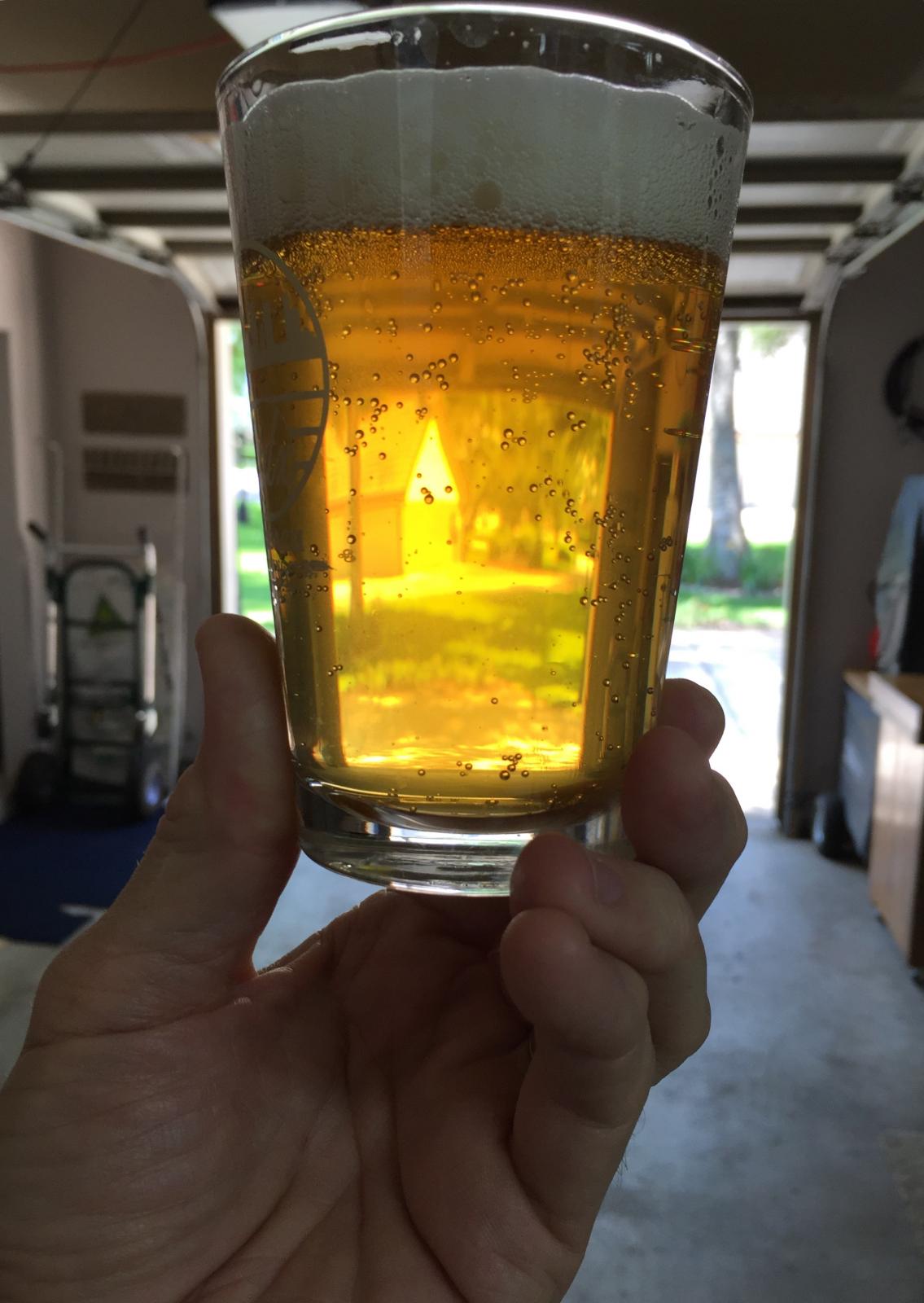OK gelatin fining seems to have cleared the character of a beer that already had very very little sediment. So I am not touching gelatin with a 100ft stick.
With all that oxygenation you're probably getting an acetobacter infection started too, as testified by the vinegary taste.
By the way, your "calculated" alcohol values are probably way off the mark too, if you freeze the beer so fast and then simply thaw it out you'll definitely have some alcohol leftover in the slush that you throw away at the end.
Now Acetobacter infection ? Not unless those things can infect sub freezing temps and a healthy high 20's or more abv even if your slushy has high abv assumption holds up. The thing never gets warmer than 32F once the can is opened. I make several versions of things fermented with aceto and lacto bacteria. Those can not start an infection much under 50F let alone under 32. The vinegar/sour/sharp tastes are from beers that already tasted sour and sharp and vinegary. Remember what is in the beer ends up in the concentrate, but not in the same ratio. If I threw in say a table spoon of salt - nearly all of that will stay in the ice, very little ending up in the alcohol, of course I cant shoot for 30% abv in that case, because the 70% that's not alcohol will have plenty of salt to sock your taste buds.
I have experimented with the melt off, tasted the left over, melted more tasted it etc etc etc. I arrived at 30-35%, and the squeezing the air out of the bottle and the whole process by trial and error. I am confident that shooting for 35% mathematically leaves me with 30+% - simply because it wont freeze.
Remember freezing fast or slow makes no difference, in fact the flattening of the bottle and putting in a cold beer in it results in a faster freeze. My freezer is -15 or so. If the deepest point in the 35 degree liquid is say 2", the core will freeze in a few hours. I let it stay for 2+ days - I don't want to produce a lot faster than I can drink it. However when it melts, you want the alcohol in the center to melt and run out before the water in the outer wall has melted.
The physics is pretty simple. The wall freezes first, and the wall melts first. The liquid needs to have a flow out path, again wall is the best option here. You want alcohol to melt and flow out at a high enough rate that the water that also ends up in the melt is low enough, and by the time you're at that 35% concentration, you likely have over 30%. It will not freeze in my freezer too.
I will have to send these things off to test, but a test I have made is - I taste the liquid as it runs out after I have hit my mathematic 35% volume. If it has the alcoholic taste, I hold it for another oz or so, taste it again. Repeat.
Agreed finally I will need to test it with a proper lab for sure. I am not sure I'll be doing this in even a few months, so I'll hold off on it for now. It seems to be $60-200 because I also want to get carb numbers from the lab test.
Cool.
Srinath.





